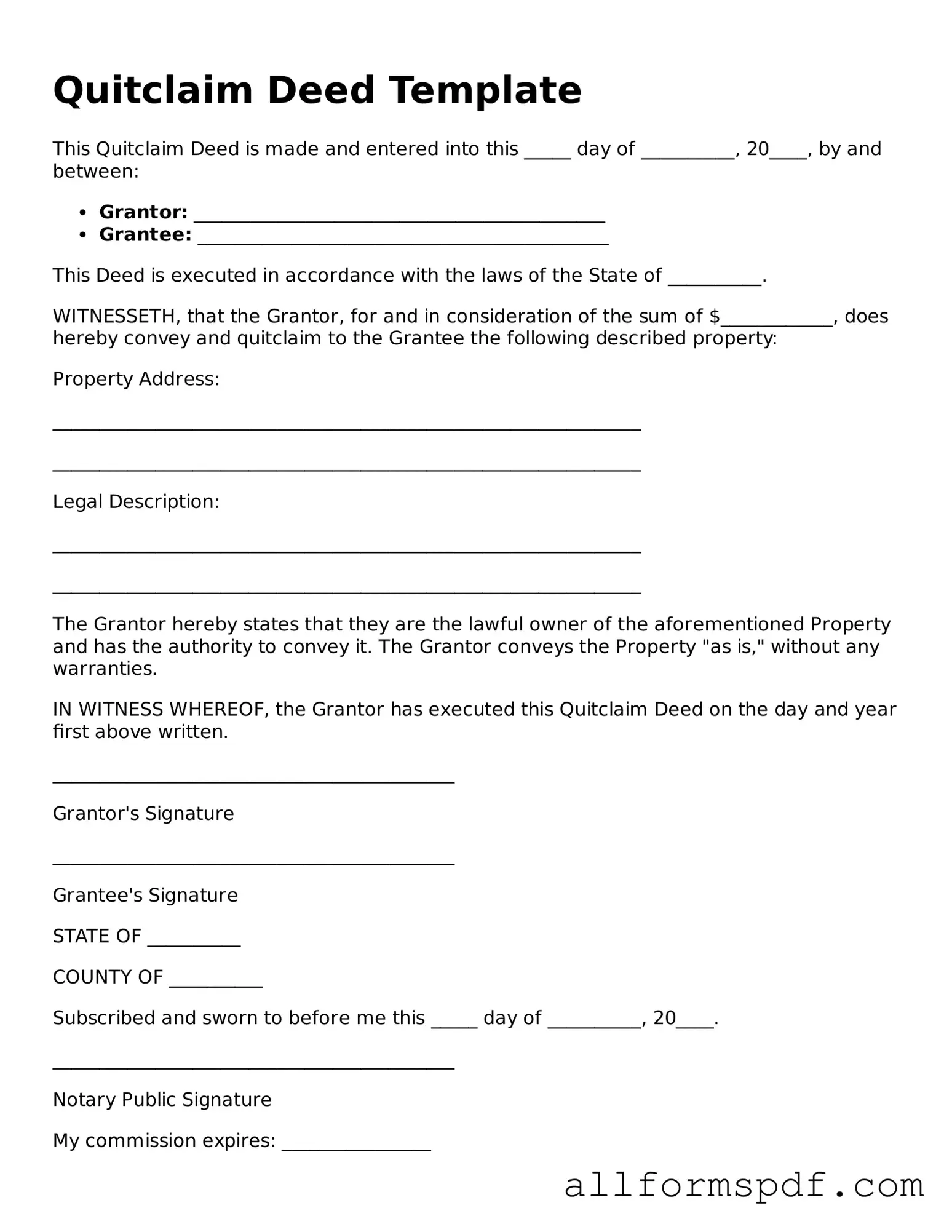Filling out a Quitclaim Deed form can seem straightforward, but many people make common mistakes that can lead to complications down the line. One significant error is not including the full legal names of all parties involved. This includes both the grantor, who is transferring the property, and the grantee, who is receiving it. Using nicknames or initials can create confusion and may render the deed invalid.
Another frequent mistake is failing to accurately describe the property being transferred. It’s crucial to provide a clear and precise description, including the property address and any relevant parcel numbers. Omitting this information or being vague can lead to disputes or challenges regarding ownership in the future.
Many people overlook the importance of having the Quitclaim Deed notarized. A notary public’s signature adds a layer of authenticity to the document, confirming that the parties involved are who they claim to be. Without notarization, the deed may not be accepted by some institutions or could be challenged in court.
In addition, individuals often forget to check local laws regarding recording the deed. Each state has its own requirements and deadlines for recording property transfers. If the deed is not recorded in a timely manner, the grantee may lose their rights to the property, or the transaction may be questioned.
Lastly, neglecting to consult with a legal expert can be a costly mistake. While it may seem like an unnecessary expense, professional guidance can help ensure that all aspects of the Quitclaim Deed are properly addressed. This can prevent future legal issues and provide peace of mind for both parties involved.
